Rediscovering censorship to understand the struggle for the contemporaneous age-oriented movie rating system
Maria Giusti
English abstract
I. Censorship and censorships
In cinema censorship can exist in multiple forms, so as to having been compared to ‘a thousand-headed monster’. State censorship can be preventive or repressive, or even both at the same time. In the former case, the executive power is in charge of preventing the diffusion of films that may compromise the established order’s stability and interests. The State may exercise its control not only on the films already realized but also on the scripts: operators cannot start shooting before its approval. Repressive censorship occurs when judges are entitled to stop the circulation of already released films. Even private organizations can exercise censorship, such as religious confessions or associations of common decency. Finally, some forms of censorship may operate in a more elusive way, through expected business consequences likely to affect authors and directors’ freedom of choice. In its multiple configurations, censorship does not merely represent an intervention to grant or deny the opportunity of artistic expression; by its threat, it influences operators’ choices, actually taking part in the realization of the films.
The history of Italian cinema reflects the multifaceted character of censorship (see, among many, Argentieri 1974 and Laura 1961). Preventive censorship was established in 1913 (Law No. 785/1913 of 25th Jun) and was only abrogated at the end of 2017 (Legislative Decree No. 203/2017 of 7th December) [1]. Indeed, since 2017, the State can only determine whether a film is suitable for all or only for minors. In over 100 years of censorship’s existence (1913 to 2017), the legislator modified the system several times. Still, some aspects recurred over the whole period. Film rights owners (producers and distributors) were required to present their works to a State committee, the composition of which changed over time: magistrates, mothers, public officials, cinema experts took turns in this role. The committee was able to adopt a number of decisions. It could declare the film suitable for everyone or classify it as suitable for adults only, or it could order a ban on the film’s projection, censoring it entirely. Finally, it could opt for partial censorship, subordinating the projection to cuts of single scenes or lines. If unsatisfied with the committee’s decision, film right owners could appeal to a second-level committee, and from 1962 on eventually to an administrative judge. The absolute prohibition of a film’s projection – frequent in the past – was established for three movies since 1960 (if one excludes the pornographic ones): The return (Jens Jørgen Thorsen, 1992), Totò che visse due volte (Daniele Ciprì and Franco Maresco, 1998) and Morituris (Raffaelle Picchio, 2011). Still, the imposition of cuts has been persistent in modern times too. In some cases, this intervention made films incomprehensible by eliminating scenes or lines fundamental to the plot’s evolution or the comprehension of directors’ thoughts (Liggeri 2012, 226).
II. Cutting or not cutting as a matter of images
To discuss the relationship between censorship and images, this paper exploits four films that did or did not experience preventive censorship in Italy. The films were chosen based on the following criteria: a) their censored frames and related committees’ decisions are available. Indeed, this material is accessible only for some films shot between 1926 and 1988, thanks to Cinecensura, a permanent virtual exhibition organized by the Italian Minister of Cultural Heritage; b) they were cut (or not cut) for reasons not immediately comprehensible.
To discuss the relationship between censorship and images, this paper exploits four films that did or did not experience preventive censorship in Italy. The films were chosen based on the following criteria: a) their censored frames and related committees’ decisions are available. Indeed, this material is accessible only for some films shot between 1926 and 1988, thanks to Cinecensura, a permanent virtual exhibition organized by the Italian Minister of Cultural Heritage; b) they were cut (or not cut) for reasons not immediately comprehensible. Focusing on cases of cuts, rather than total censorship, allows for a more precise and sophisticated analysis. Looking at cases of uncut films favours a better understanding of how censorship worked. To this extent, it sometimes appears even more helpful to look at what was not censored rather than to what actually was; c) they allow for the analysis of cases of censorship and non censorship related to sex, religion, and politics – that is, the three largest censorship triggers in Italy; d) they were realized in a homogenous historical period: the oldest case study is from 1957, the most recent from 1964. This way, the historical circumstances (political, sociological, etc.) considered here are circumscribed. The paper explores if the occurrence of censorship, or lack thereof, can be partially explained by considering how the films’ images are built, rather than the topic they talk about. This approach highlights the complexity of censorship and allows for a structured discussion on the relationship between censorship and images. Upon this discussion, the paper analyses the pros and cons of the different possible juridical contemporaneous approaches to establish the films’ rating.
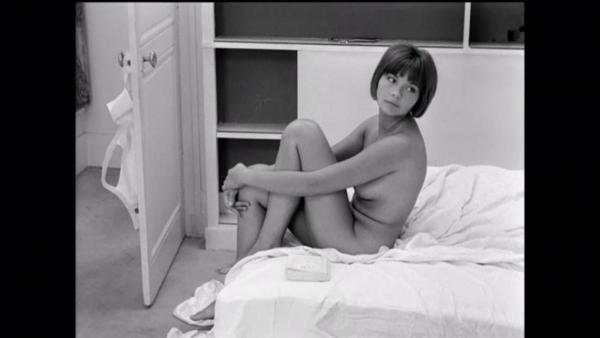
1 | Charlotte (Macha Méril) in Une femme mariée (1964), directed by Jean Luc Godard and produced by Anouchka Films and Orsay Films.
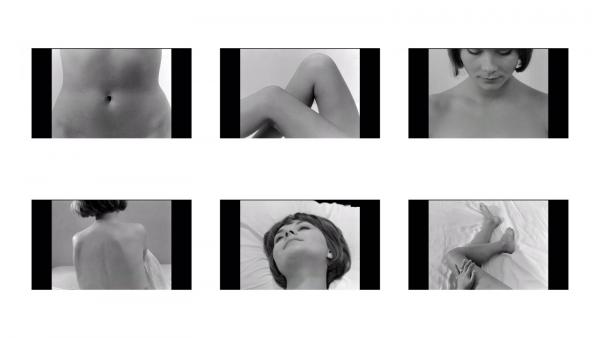
2 | Charlotte.
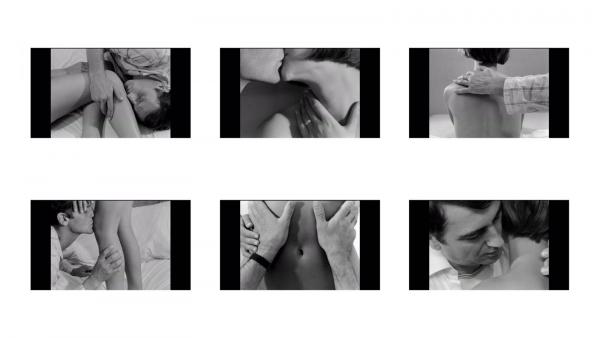
3 | Charlotte, Pierre (Philippe Leroy) and Robert (Bernard Noël).
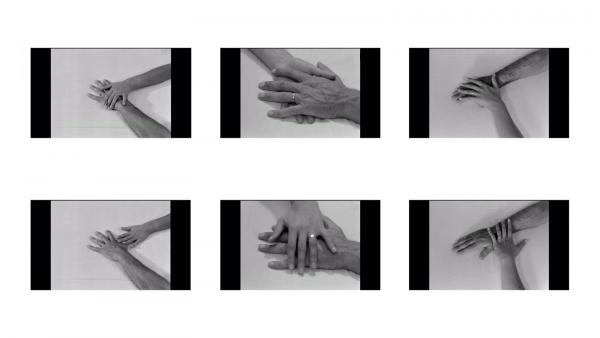
4 | Charlotte, Pierre and Robert.
II.1 Sex
The first case study is the French film Une femme marriée (Jean Luc Godard, 1964). The plot tells a ‘typical’ day of a bourgeois woman, Charlotte. In the course of 24 hours, she kills time and meets her husband and her lover, making love with both. She discovers to be pregnant and, unable to figure out who the father is, she does not want to keep the baby. When she asks the gynaecologist what he thinks about contraception, he replies that it is appropriate to start talking about these issues. “We live in the age of moon trips! We cannot continue to allow children to be made against nature or in poverty conditions […]”. These are strong topics for the time: in Italy, there was still no divorce (it was legalised in 1970) and producing and advertising the contraceptive pill was a crime (it was decriminalized in 1971). Moreover, this is the first time a French film directly addresses the contraceptive pill (Habib 2020).
Censorship moved against the movie. In France, the State authorized the release of the film, still banning it to minors. However, the production had to meet some requirements: cutting a couple of frames and changing the title. Initially, Godard wanted to name his film La femme mariée (The married woman), but according to the censorship committee, such a title risked evoking an exemplary model, normalizing the adultery. The definite article was exchanged with an undefined one: Une femme mariée (A married woman) allowed to show Charlotte as just one of the many married women, unable with her behaviour to ruin the reputation of the others. In Italy, the first instance committee banned the whole film, considering it “contrary to common decency” (“contrario al buon costume”). Distributors appealed to the second level committee, which allowed the film to be screened in theatres without asking for any cuts, merely imposing a ban on minors (the first and second instance decisions are available here).
Why did the second-level committee reverse the decision of the first one? In Une femme mariée there are several scenes of sex and the images of nudity and intimacy were usually censored in Italy during those years [2]. The reasons why the movie was able to avoid cuts can be partly explained in terms of images: the particular visual choices made by Godard to treat sex allowed to weaken its threat. The full naked body of the protagonist is shown only once [Fig. 1].
At the centre of Godard’s work lies the fragment: each image is limited to a single detail of the actress’ body. The camera sometimes shows her neck, sometimes the back, the lips, the eyes [Fig. 2]. The different parts of the protagonist’s body, always shown in the foreground on the sheets’ white background, are sometimes kissed, sometimes touched [Fig. 3]. As Moravia noticed, “Godard's contemplation has never been so intense, so fond, so charmed. No coincidence that a good third of the film represents hands that caress, touch, grope, intertwine, help each other, tighten, separate” (“La contemplazione di Godard non è mai stata così intensa, così affettuosa, così affascinata. Non per nulla un buon terzo del film rappresenta mani che si accarezzano, che palpano, che toccano, che si intrecciano, che si aiutano, che si stringono, che si separano”) (Moravia 1975, 76). The protagonists’ hands manage indeed to self-establish as a predominant image: they are enough to tell the love acts that are being consumed [Fig. 4].
Still, no source let us think that Godard shot sex scenes in such a delicate way to specifically escape from censorship. The director claimed instead to have torn the protagonist’s body to pieces because she is a woman in pieces, in the proper sense of ‘parts detached from each other’, divided as she is between husband and lover. However, such a delicate way of telling sex has probably been one of the reasons for the lack of censorship.
II.2 Religion
The next case studies are Il grido (Michelangelo Antonioni, 1957) and La dolce vita (Federico Fellini, 1960). The analysis focuses on three sequences, one from the former and two from the latter, and how they deal with the topic of religion and the risk of potential blasphemy.
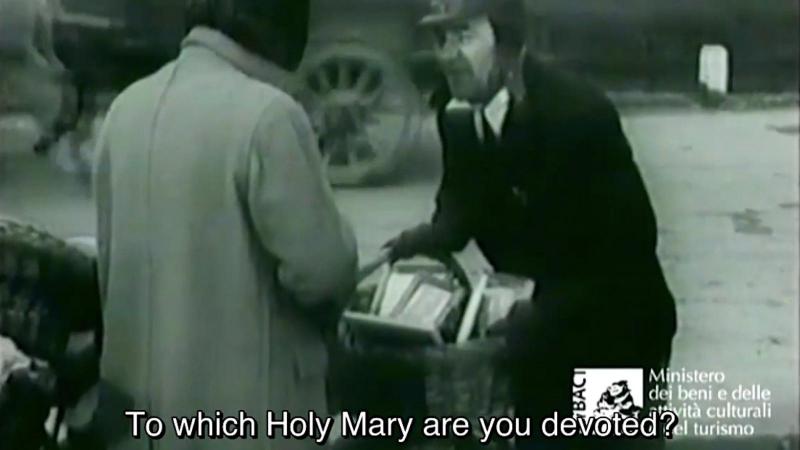
5 | Virginia (Dorian Gray) and street vendor in Il Grido (1957), directed by Michelangelo Antonioni and produced by SPA Cinematografica in collaboration with Robert Alexandrer production.

6 | Marcello (Marcello Mastroianni), paparazzo (Walter Santesso) and girls in La dolce vita.
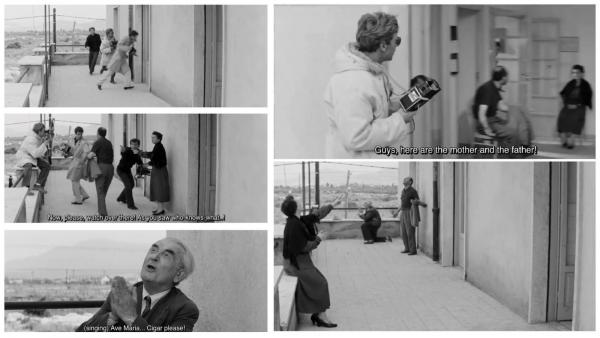
7 | Paparazzi and family of Dario and Maria in La dolce vita (1960), directed by Federico Fellini and produced by Riama Film, Gray Films and Pathé Cinéma.
In the first sequence of Il grido, a street vendor tries to convince a woman to buy one of his paintings, representing copies of famous Italian Madonnas: “to which Holy Mary are you devoted?” (“A quale Madonna siete affezionata?”). She would like to buy one of the representations of the Madonna del Carmine, which is yet too expensive for her. The street vendor then offers a different Madonna, that of Pompeii: even if less expensive, “it is miraculous too” (“è miracolosa anche questa”) [Fig. 5].
In the first sequence of La dolce vita, Marcello – the reporter protagonist of the film – and his pal fly over Rome in a helicopter. They are following another helicopter, which is spectacularly transporting a statue of Jesus in Saint Peter square. The two fly over a terrace where some girls are sunbathing, capturing their attention: “Look! It is Jesus!” (“Guarda! È Gesù!”), affirms one of them pointing to the floating statue. Marcello and his pal stop above the terrace, and the girls shout at them, “Hey! What is that statue? Where are you bringing it?” (“Hey! Cos’è quella statua? Dove la state portando?”). The two men shout back, trying to overcome the engine’s roar: “We are bringing it to the Pope!” (“La portiamo dal papa!”). They briefly flirt with the girls, asking for their phone number. After this short break, Marcello’s helicopter must return to follow the other one. The scene ends with the image of the statue of Jesus embracing Saint Peter Square [Fig. 6].
In the second sequence of La dolce vita, Marcello and his pals reach a country village to report Madonna’s apparition to two indigenous children. The paparazzi manage to find the children’s family and prepare them to shoot the pictures they need for the media coverage. The mother is in shock; she would like to go back home, but the paparazzi make her pose as if she is seeing and pointing to the Madonna. They are enthusiastic about her crying, making the shooting very effective: “Bravo: cry, cry!” (“La pianga, la pianga!”). The father, happy about the sudden popularity, cares about looking beautiful in the photos: “Do I look good like this?” (“Sto bene così?”), and happily states: “It is a real miracle! The Madonna remembers everyone!” (“È un vero miracolo! La Madonna si ricorda di tutti”). The grandfather poses as if he was praying, sings a Hail Mary, and asks for a cigar. After having taken the shots, the paparazzi run away without losing any more time, while the three are still posing [Fig. 7].
All the three scenes show a possibly blaspheme approach to religion, combining it now with money, business, or sex. Still, they received different treatments in terms of censorship. The sequence of Il grido was censored: the State committee decided for the prohibition to the minors only after the realization of some cuts, including the sequence described (the decision is available here). Interestingly, the sequences from La dolce vita were not censored: the committee allowed the film to be released in theatres with the minors’ prohibition without asking for any cut (the decision is available here). Still, the question is not why the Antonioni’s sequence was censored: it is rather why Fellini’s sequences were not.
It is difficult to come forward with a single answer. Politics played a role: Fellini, unlike Antonioni, had close contacts with the Church. According to different sources, La dolce vita was not cut due to the mediation of Jesuit Angelo Arpa, who was very close to the President of the Conferenza Episcopale Italiana – the influential official assembly of the bishops in Italy. Indeed, not everyone in the Catholic world criticized the movie. The most conservative components cried out at the scandal, condemning the film as exalting vice and malpractice: seven articles appeared on the Vatican newspaper L’Osservatore Romano nicknaming the movie like ‘The disgusting life’. Others, including some representatives of the governing party Democrazia Cristiana, defended Fellini: in telling the life of dissolute people, he showed the crisis of a society far from Catholic values and expressed anxiety for redemption. Pasolini came to define the film as “the highest and absolute product of Catholicism in recent years” (“il più alto e il più assoluto prodotto del cattolicesimo di questi ultimi anni”), noticing that it tells the loss of the sacredness of sex – in typical Catholic rhetoric – reduced to a mere superficial and sinful game (Pasolini 1960).
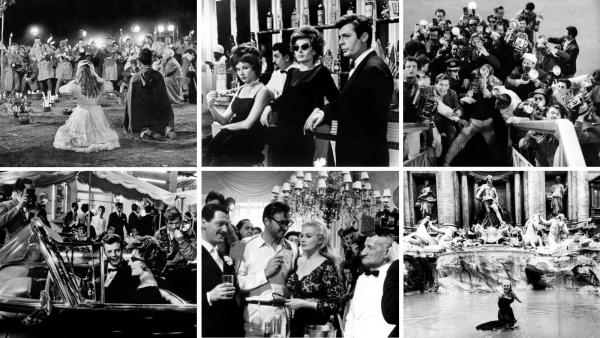
8 | Marcello, Maddalena (Anouk Aimée), Sylvia (Anita Marianne) and others in La dolce vita.
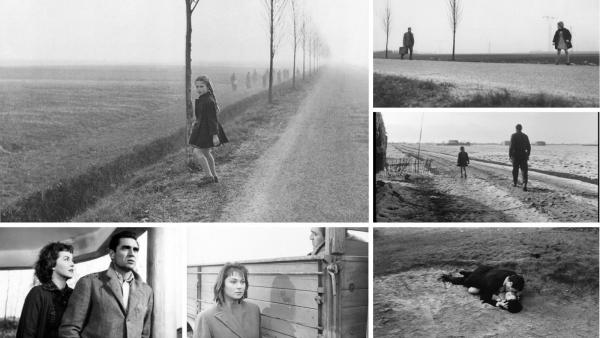
9 | Rosina (Mirna Girardi), Aldo (Steve Cochran), Elvia (Betsy Blair) and Virginia in Il grido.
Still, one of the reasons why La dolce vita was not censored can be investigated in terms of images. The strength of the sequences analysed, and therefore their potential danger in the censors’ eyes, is influenced by the overall aesthetic of the two films, by how all the images that compose it are built. In Fellini’s work, there is a disproportion between the power of a single sequence of images considered on its own and the power of the same sequence contextualized in the whole set of film images. The power of a single sequence is weakened by the whole film being a triumph, a carousel of strong images, characterized by an extraordinary crowding of characters, who move in an opulent environment, between frivolous parties and erotic hangovers [Fig. 8].
Il grido is a film in which the protagonist, Aldo, was left by the woman he loves. He starts a journey with his daughter, Rosina, looking for some distance, hopefully sufficient to forget. The images used to describe this drama and the film’s entire stylistic structure are coherent with Aldo’s feeling of distance and estrangement. The landscape in which he moves is the Delta Padano, depicted in the frozen coldness of an endless winter, that admits no other dimension than the emptiness, and no other colour than the grey. A sacrilegious scene in Il grido, like that of the street vendor of Madonna paintings, remains much more impressive than in La dolce vita. Antonioni builds its film on the concept of absence, both thematically and stylistically. Consequently, the little that is present assumes a considerable weight, becoming necessarily significant. And easy to cut, for a censor, unlike La dolce vita, where the blasphemy is just one more depiction of a frivolous and sinful world [Fig. 9].
III. Politics
The last case study is the film Salvatore Giuliano (Francesco Rosi, 1962), the Sicilian criminal known as the responsible for the massacre of Portella della Ginestra. On May 1st, 1947, some workers gathered to celebrate the victory in the Sicilian Regional Assembly elections of the coalition of the Communist Party and the Socialist Party. They were attacked in a shooting: 11 people were killed and 27 wounded. During the trial that followed the massacre, many suggested that some political authorities planned the crime and commissioned its realization to Giuliano’s gang. It was generally suggested that there were some forms of collusion between the Giuliano’s gang, the mafia, and the Italian State. Still, the judges concluded that Giuliano’s gang acted autonomously.
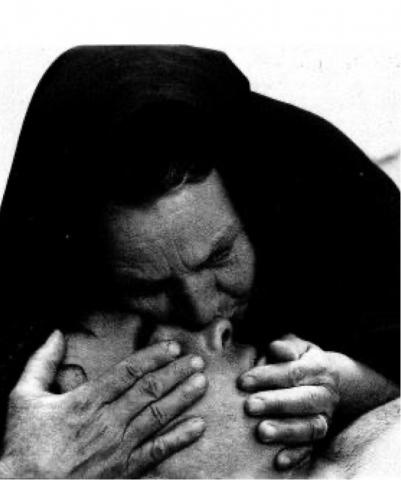
10 | Salvatore (Pietro Cammarata) and mother in Salvatore Giuliano (1962), directed by Francesco Rosi and produced by Lux Film, Vides Cinematografica and Galatea Film.
It was a complicated tale to tell, and the censorship committee kept the film blocked for forty days without making any decision. In the end, it imposed the realization of several cuts (the decision is available here). It required, for example, the cut of a frame in which the carabinieri “act excessively rude, pushy” towards some women (“si mostrano eccessivamente rudi con spintoni”), frame considered “offensive to the decorum and prestige of the police officers” (“offensivo del decoro e del prestigio degli agenti della forza pubblica”). Other scenes were cut because “cruel and shocking” (“truci ed impressionanti”), such as the one of Carabinieri shooting on Giuliano’s corpse, and that of the bandit’s mother in pain, kissing the corpse while crying and screaming, which is probably the most interesting cut. While an image of a desperate woman in front of his dead son can be shocking, it can be regarded as a high manifestation of love and caring, a natural distress [Fig. 10].
Therefore, one can suppose that, in this case, commissioners declared the intention to censor something – a sequence that could shock the audience – while they were actually censoring something else: the humanization of a criminal. Through the strong visual impact of his mother despair, this sequence does not show the death of a felon, but that of a man. We cannot be sure that, while stating some reasons to cut a sequence, the committee was not after something else – possibly wholly different [3].
Between certitude and flexibility
Preventive censorship no longer exists in Italy: in 2017, the legislator abrogated it and introduced an age oriented film rating system to protect only minors. Although censorship was abrogated, being aware of its mechanisms helps understanding the pros and cons of the contemporaneous juridical approaches to classify films, such as labelling them for everyone or adults only. During the discussion on how to organise the new Italian system, some experts proposed taking the Dutch system as a model. In the Netherlands, the film rating is not determined through human evaluation, but via an automatic online procedure. Before distributing their films, producers must answer preestablished questions on the length and nature of potentially offending scenes. The system analyses the answers and, almost in real time, automatically determines the rating of the film (see Sammarco 2014). The Italian legislator did not follow the Dutch model. The system introduced in 2017 remains human-driven, based on the evaluations of both cinema operators and the State: producers and distributors must classify their films (for all or adults only), and then send a copy of it to a State committee in charge of confirming or modifying the rating (Ramajoli 2018). Moreover, the legislator did not state precise preestablished criteria for such an evaluation. Shortly, Italy prefers to pursue flexibility over certitude.
In the light of what has been seen in this paper, the Italian approach is understandable: one can legitimately wonder if an automatic procedure, based on preestablished questions, may be able to take into account the evidence that images may deliver the same content in very different ways. Films can address a subject potentially harmful for a child, but using images able to weaken the topic, or even strengthen it – depending not only on the images themselves (Une femme mariée) but also on the context in which they lie (Il grido and La dolce vita). Through this approach, Italy wants each film to be evaluated as a specific case, taking into account a larger complexity and avoiding the risk of excessive rigidity and automatism. This allowed, for example, for the release of the movie Blow-Up in 1966, without it attaching the reputation of a pornographer to Antonioni.
The prosecutor of Ancona agrees with the one of Naples (who orders the seizure without territorial competence) on the presence of two erotic scenes. Considering the film as a whole, “with regard to its intimate content” (“con riguardo al suo intimo contenuto”), he concludes, however, that such scenes are necessary for the script. As highlighted in the prosecutor’s indictment, the first scene, breaking the state of tension created in Thomas by the revelation of the accidentally photographed crime, “underlines once again his inconstancy, so easy to pass from the convulsive search for reality contained in the photographs of the park to the fun with the possessed teenage girls” (“sottolinea ancora una volta [...] l’incostanza di lui, così facile a passare dalla convulsa ricerca della realtà racchiusa nelle fotografie del parco al divertimento delle invasate minorenni”). The second scene – the intercourse of the painter’s wife – has the purpose of highlighting “the antinomy between the condition of the painter, impregnated in that moment of a complete, real state of certainty and well-being, albeit only carnal, and the state of mind of Thomas, oppressed by doubt [...] and more than ever only while he feels the need for contact and communication [...]” (“l’antinomia tra la condizione del pittore, pregno in quell’attimo di un compiuto, reale stato di certezza e di benessere, sia pure soltanto fisiologico, e lo stato d’animo di Thomas, oppresso dal dubbio [...] e più che mai solo mentre sente il bisogno del contatto e della comunicazione [...]”) (Sbordone 1968, 103-104).
Interestingly, even the French legislator has recently shown to be aware of the importance of flexibility. In 2017, it changed the criteria to be followed to classify a movie as forbidden to minors (Decree No. 150/2017 of 8th February). While previously every film with not-simulated sex scenes had to be forbidden, today this applies only to those with scenes likely to “seriously disturb the sensitivity of minors” (“troubler gravement la sensibilité des mineurs”). This new formulation, requiring questioning if a scene “seriously” disturbs minors’ sensitivity, generates less certitude on the rating decisions. However, the criterion of presence/absence of simulation sometimes led to inappropriate rating: a scene simulated by the actors can be realistic and disturbing, while there may be not-simulated sex scenes without dangerous effects for minors.
However, as a system based on a need for certainty, even a flexible system, such as the Italian one, is likely to generate risks. The main one is that the decisions may be affected by the culture, experience, and sensitivity of the evaluators – the operators, the committee, and the judges in the event of appeal – compromising the objectivity and homogeneity of the ratings adopted. Moreover, there is a risk that the State committee may declare the intention to forbid to minors something with the hidden – or even unconscious – intention to forbid ‘something else’ (as in the case of Salvatore Giuliano) [4] . The danger here is not only that those movies are forbidden to minors, but that no one will ever watch the images considered dangerous to minors. Indeed, a film prohibited to minors is not desirable for production companies, since it is less marketable. One can wonder whether producers are induced to autonomously cut the elements likely to induce the ban to minors, thus obtaining the ‘for everyone’ rating for their movies. The risk is to face a sort of ‘self-censorship’, sneakier since it uses the market leverage rather than the power of the State.
The hope is that we never have to agree with those who referred to censorship as ‘Madama Anastasia’, a nickname that Italy took from France, where it began to be used during the Deuxième République in reference to censorship of literal and theatrical works. According to a first hypothesis, the nickname is related to Pope Anastasius I, the censor of Origen’s works. Another one tells that Miss Anastasia was the clerk in charge of carrying the files of censorial practices to the censor commissioners of Paris (Ory 1997, 92). However, the most accredited hypothesis is that the nickname was invented to express the idea that censorship, a monster with a thousand heads, even when believed buried, resurrects relentlessly. In Greek, ἀνάστασις indeed means resurrection.
Notes
[1] Note that the long-life of film censorship has been possible because of the wording of art. 21 of the Italian Constitution. Its first paragraph recognizes everyone the right to freely express his thoughts in speech, writing, or any other communication form. However, freedom of expression founds a limit in public morality: paragraph 6 prohibits any publication, performance, and other exhibits that breaches it. Furthermore, the article puts the ordinary legislator in charge of prevention and enforcement related to such violations. The Constitution explicitly limits preventive measures to seizure for the press: under Par. 2, it «may not be subjected to any authorizations or censorship», Still, such a prohibition explicitly concerns only the press: therefore, it seems that preventive measures may end up including even censorship for all other forms of communication – including cinema.
[2] Among the films that experienced problems with censorship for reasons linked to sex exposure during that period: L’Avventura (Michelangelo Antonioni, 1960), Un amore a Roma (Dino Risi, 1960), La notte (Antonioni, 1961), La ragazza in vetrina (Luciano Emmer, 1961), Una storia moderna: l’ape regina (Marco Ferreri, 1963), Marcia Nuziale (Ferreri, 1965), Blow-up (Antonioni, 1966), La caduta degli dei (Luchino Visconti, 1969), Partner (Bernardo Bertolucci, 1968).
[3] The topic will be more deeply addressed in collaboration with Professor Maria Luisa Catoni in a future paper, currently under preparation.
[4] Note however that the Italian legislator provides several protection mechanisms. First, the right for the producer and/or distributor to be audited by the committee (Art. 4, Par. 6, of Legislative Decree No. 203/2017). It follows that the committee is expected to provide an adequate explanation and motivation in case its decision is inconsistent with the observations of the distributor and/or producer. Second, in case of dissatisfaction with the decision, the producer and/or distributor has the right to request for a committee with a different composition to reassess the case (Art. 4, Par. 5). Finally, the producer and/or distributor can appeal and challenge the decision of the second committee in front of the administrative judges.
Bibliography
- Argentieri 1974
M. Argentieri, La censura nel cinema italiano, Roma 1974. - Habib 2010
A. Habib, Chronique du detail: autour d’une femme mariée, “HorsChamp” (2010). - Laura 1961
E. G. Laura, La censura cinematografica: idee, esperienze, documenti, Roma 1961. - Liggeri 2012
D. Liggeri, Mani di forbice: la censura cinematografica in Italia, Alessandria 2012. - Moravia 1975
A. Moravia, Al cinema, centoquarantotto film d’autore, Milano 1975. - Ory 1997
P. Ory, La Censure en France à l’ère démocratique, Bruxelles 1997. - Pasolini 1960
P. Pasolini, L’irrazionalismo cattolico di Fellini, “Filmcritica” 94 (1960), 80-84. - Ramajoli 2018
M. Ramajoli, Cinema e libertà: dalla censura preventiva al movie rating system, “Aedon” 1 (2018). - Sammarco 2014
P. Sammarco, La revisione cinematografica e il controllo dell’audiovisivo. Principi e regole giuridiche, Bologna 2014. - Sbordone 1968
V. Sbordone, Ufficio istruzione penale; decreto 11 novembre 1967; Giud. Rocco, P.M. Sbordone (concl. conf.); imp. Antonioni, “Foro it” 2, 91 (1968) 100-106.
English abstract
In Italy, since 1913, producers were required to obtain approval from a ministerial committee before screening their films in theaters. The committee could either censor the whole film or impose cuts. This paper explores the relationship between cuts and images through the analysis of some movies that were (or were not) cut for reasons not immediately clear: Godard’s Une femme mariée, Fellini’s La dolce vita, Anonioni’s Il grido and and Rosi’s Salvatore Giuliano. Are cuts decisions (or lack of them) always related to the film’s topic, or may they depend on the images narrating the topic themselves? Did it ever occur that images were used as a pretext for cutting something different from what was stated? After having reasoned upon these and other questions, the paper analyses advantages and disadvantages – for the freedom of artistic expression – of the possible juridical approaches to films rating. Indeed, the Italian State can no longer censor films, but it is still in charge of establishing whether they are suitable for everyone or adults only.
keywords | censorship; Italian cinema; minors protection.
La Redazione di Engramma è grata ai colleghi – amici e studiosi – che, seguendo la procedura peer review a doppio cieco, hanno sottoposto a lettura, revisione e giudizio questo saggio.
(v. Albo dei referee di Engramma)
Per citare questo articolo/ To cite this article: Maria Giusti, Rediscovering censorship to understand the struggle for the contemporaneous age-oriented movie rating system, “La Rivista di Engramma” n. 179, febbraio 2021, pp. 195-208. | PDF dell’articolo